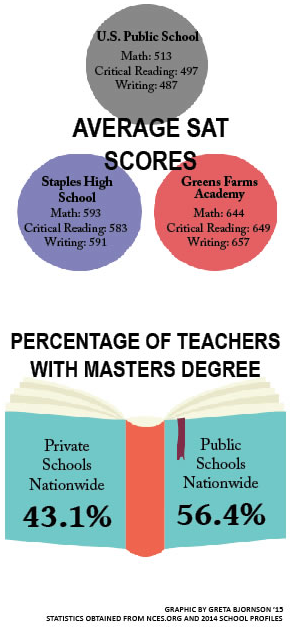Economics of public and private education: Financial factors prove to play a definitive role in poor U.S. test scores
The United States has a long tradition of valuing education, but, recently, confidence in public schools has fallen. The 2012 Program for International Student Assessment placed American students in the middle range of participating countries, far below first-world countries like Germany and Switzerland.
But this gap might not be the product of inadequate schooling; a new study points to economic issues as the cause of America’s test score woes.
A recent study by the National Center for Educational Statistics (NCES) finds that it’s not the schools that are failing. Instead, it’s economic status and social pressures that are resulting in U.S. public school students having lower scores than other countries.
The study showed that in schools with less than 25 percent poverty rates, American children scored higher than the rest of the world.
Principal John Dodig wholeheartedly agrees with what the new study suggests.
“I get angry and frustrated. No politician has the guts to say it is an economic and social problem,” Dodig said. “Therefore, out of cowardice, [he or she] points a finger at teachers and says, ‘You are the problem.’”
The study suggests that the low test scores of public schools in lower economic areas are due to students lacking basic necessities such as food, which in turn causes them to focus less on their schoolwork.
Performance on the 2014 CAPT test shows the disparity between wealthier and less-affluent districts in Connecticut.
On the science section of the 2014 test, for example, 98.1 percent of students in Westport were at or above the proficiency standard, while in nearby Bridgeport, whose per capita income is $19,854 compared to Westport’s $90,792, just 38.4 percent of students performed at that level.
Dodig believes that another reason there’s a disparity in districts with different economic statuses is that students in affluent communities like Westport have grown up in an environment that values education and supports academic efforts.
“The kids here are prepared to be students because they’ve been taught how to do that in elementary school and middle school, and their parents have supported that and supplemented what the schools could not provide,” Dodig said.
Nonetheless, despite the NCES study that claims public schools in prosperous districts perform better than the rest of the world, private school students still scored higher than public school students on the National Assessment of Educational Progress (NAEP), a test administered to both public and private school students.
Mack Muller, a sophomore at Greens Farms Academy who completed his freshman year of high school at Staples, made the switch to a private school this year.
“The class sizes [are] smaller, so you always [have] to be a part of class discussions and contribute to the class,” Muller, who grew up attending a private school in New York City before moving to Westport, said.
Despite the appeal of private schools, a con to attending one is the cost, as nearby Fairfield Prep has a tuition of $18,325 this year, and Greens Farms Academy costs $38,980 per year.
However, Reece Schachne ’16 believes the public education she receives at Staples is still great.
“I think that Staples is definitely preparing me well for the future,” Schachne said.
Ultimately, Dodig believes that on a case-by-case basis, private schools may be better for certain students. All in all, however, Dodig appreciates what public schools do for the U.S.
“Public education has been the saving grace for this country,” Dodig said.

Fritz Schemel ’17, is in his second year as a member of Inklings. After being the Sports Editor last year, he is now moving into the position of News...















































